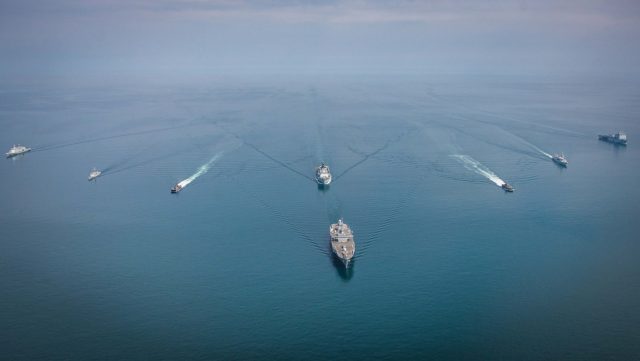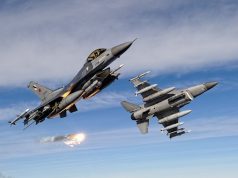The 50th edition of NATO’s premier naval exercise in the Baltic region kicked off on June 6 with air and maritime assets from 18 ally nations in attendance.
Taking place between June 6-18, Baltic Operations (BALTOPS 50) will include live training events that include air defense, anti-submarine warfare, amphibious operations, maritime interdiction, mine countermeasure operations.
“This year, we celebrate the 50th BALTOPS, an exercise that sets the foundation of interoperability across the alliance,” said US Vice Adm. Gene Black, commander, Naval Striking and Support Forces NATO and commander, US Sixth Fleet.
First held in 1972, BALTOPS is a joint, maritime-focused exercise that brings together NATO allies and partners in order to increase interoperability and enhance flexibility among the participants.
During the nineties and into the 00s, the exercise became important for NATO countries, as it simultaneously demonstrated unity and will to defend the Baltic Sea countries, as well as giving naval forces ample opportunity to train a number of naval disciplines.
BALTOPS 50 consists of two at-sea training phases: the combat enhancement training (CET) and force integration training (FIT) portion and the final tactical phase of the exercise (TACEX).
During the first six days (the CET/FIT phase), ships and aircraft will transit through the Danish Straits, focusing on maritime operations in critical chokepoints, ensuring access and freedom of navigation in the Baltic Sea.
The exercise will continue to move East during its two phases, operating in accordance with international law and supported by participating Allies and partners. The exercise will culminate with the TACEX phase, where the exercise paradigm will shift into a “free-play” portion, and commanders are given more freedom to run their own tactical programs. The TACEX phase is designed to better represent operating in real-world situations.
For the first time, exercise design incorporates defensive cyber warfare tactics, techniques and procedures as BALTOPS continues to adapt and train to ensure an asymmetric advantage in the era of modern warfare.
Naval Striking and Support Forces NATO (STRIKFORNATO) will again command and control BALTOPS from its headquarters in Oeiras, Portugal.
II Marine Expeditionary Brigade and Expeditionary Strike Group 2 will command and control exercise marine forces throughout the exercise from aboard US Navy command and control ship USS Mount Whitney (LCC 20), demonstrating international naval integration and power projection ashore for an amphibious demonstration in Lithuania.
The 16 NATO and 2 partner nations involved in the drill will provide approximately 40 maritime units, 60 aircraft, and 4,000 personnel.
The participating nations include Belgium, Canada, Denmark, Estonia, Finland, France, Germany, Italy, Latvia, Lithuania, the Netherlands, Norway, Poland, Spain, Sweden, Turkey, the UK, and the US.



























